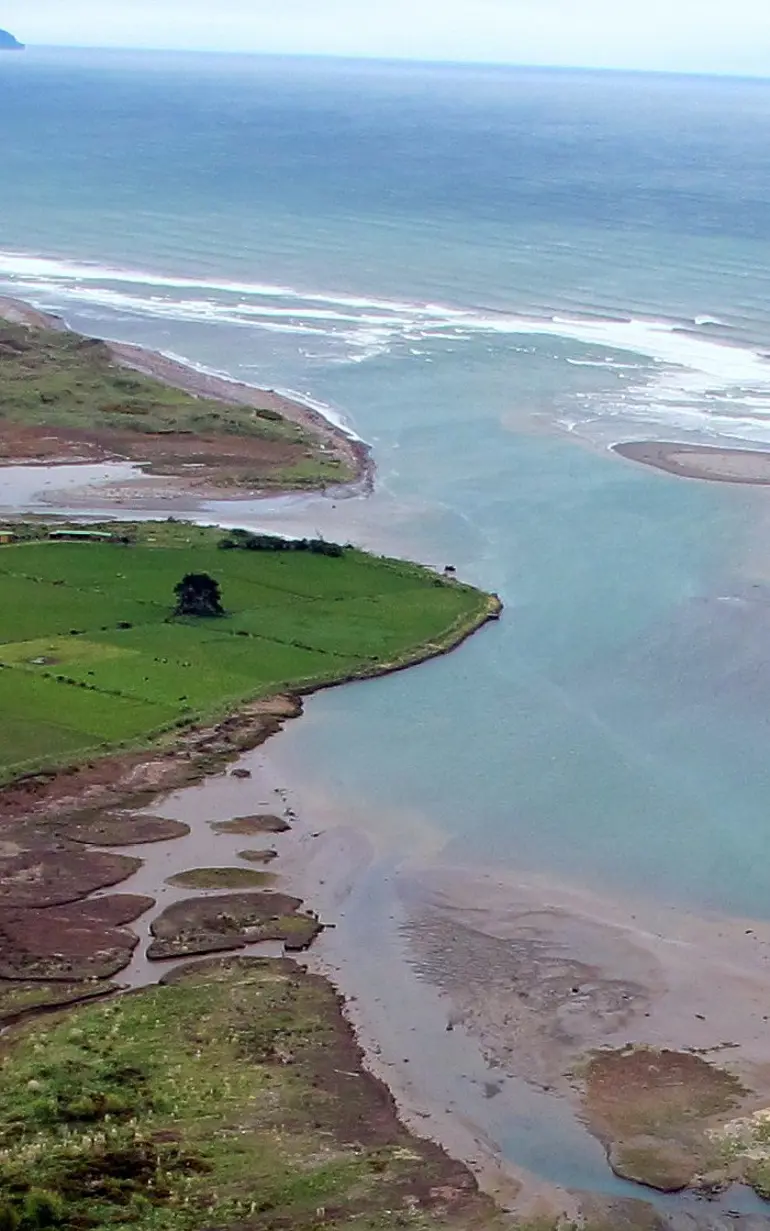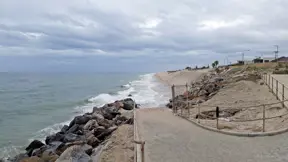
River mouth training in the Bay of Plenty
Designing twin training walls for the dynamic Opotiki Harbour Entrance
Opotiki is a township with a strong vision of increasing the social and economic well-being of its community. Researched initiatives have shown that Opotiki is perfectly positioned for a large-scale aquaculture venture—a success that can only be brought alive through a transformation of the harbour entrance. Once a well-used trading route, local authorities are looking to make the harbour easier to navigate by constructing two parallel river training walls at the entrance. To help Opotiki District Council (ODC) achieve this, DHI provided design expertise and also assessed many significant factors which could impact the components of the ambitious project.
Challenge
The coastal township of Opotiki sits on New Zealand’s eastern coast, in the North Island’s Bay of Plenty. Prior to the mid 1960s, the Opotiki harbour entrance had a long history of use by coastal shipping vessels which visited the township primarily as a trading port. Since then, the ability to navigate through the entrance has been adversely affected as waves routinely transporting sediments into the entrance formed an unreliable and often unsafe passage between the river and the sea. The confluence of the Waioeka and Otara rivers, approximately 1.5 kilometres above the harbour entrance, adds further complexity to the dynamic nature of the unique coastal environment.
The most serious incident to date was when the entrance was closed for 64 days in 2007. Regular users of the route found it challenging and dangerous to navigate the passage five days out of 30 in a month on average. The ODC rallied central and local government, iwi and community groups, and commissioned a series of investigations to improve access to the harbour. We were engaged to find a solution by providing a conceptual design for the river training works while assessing environmental impacts at the same time. After considering many alternatives, our findings concluded that twin training walls at the entrance would provide the most appropriate stabilisation. One of the most important elements involved determining whether the large scale infrastructure project would adversely affect flood levels on the township.
Solution
Different training wall configurations were assessed for a range of river flows and coastal conditions. DHI studied many aspects of the walls, including their ability to maintain a navigable entrance, the expected navigation conditions and possible scour in their vicinity. Our team also assessed the impacts on salinity within the harbour, sedimentation elements and backwater effects. On mitigating flood impacts, our experts recommended a confluence realignment as a feasible solution.
DHI's solution was to construct two short straight breakwater training walls with a new entrance to the east of the existing one. The walls, approximately 500 metres long and 120 metres apart, will also have scour protection elements included, without which the walls could be undermined during a large flood when deep scour may occur in between.
With the application of one-dimensional (1D) and two dimensional (2D) models utilising MIKE Powered by DHI software, our team successfully developed a robust solution for ODC.
Results
Ensuring the safe navigation of the harbour entrance while avoiding upstream flooding was principal within the project, as was understanding the many various coastal morphological impacts at play.
From our modelling, we established that a re-engineered harbour entrance could alleviate the vessel access issues, allowing for more stable and improved entrance conditions. Although long term morphological impacts for flooding mitigation required further investigation, a realignment channel would somewhat reduce flooding impacts. The project, when undertaken, will greatly open up opportunities for the coastal settlement of Opotiki, creating potential aquaculture ventures and raising the wellbeing of the local community on many
levels.
Client:
Opotiki District Council (ODC)
Location:
New Zealand
Related SDG(s):
SDG 13: Take urgent action to combat climate change and its impacts
Technology:
About our client
Opotiki District Council (ODC)
You may also like
How can we help?
With our global network of offices, we make sure you get the right answers to your local needs. Tell us about your water challenges and we will get back to you.


